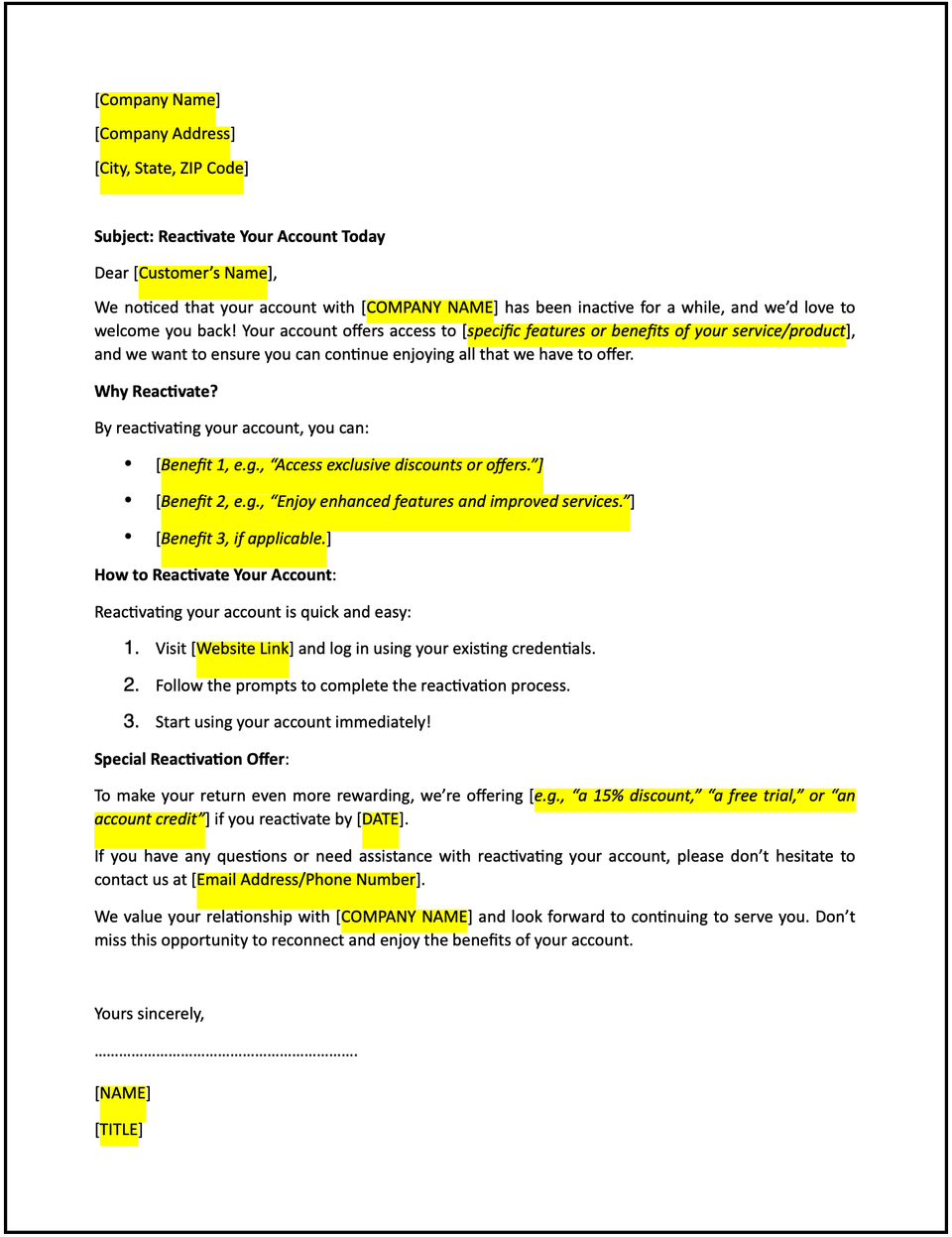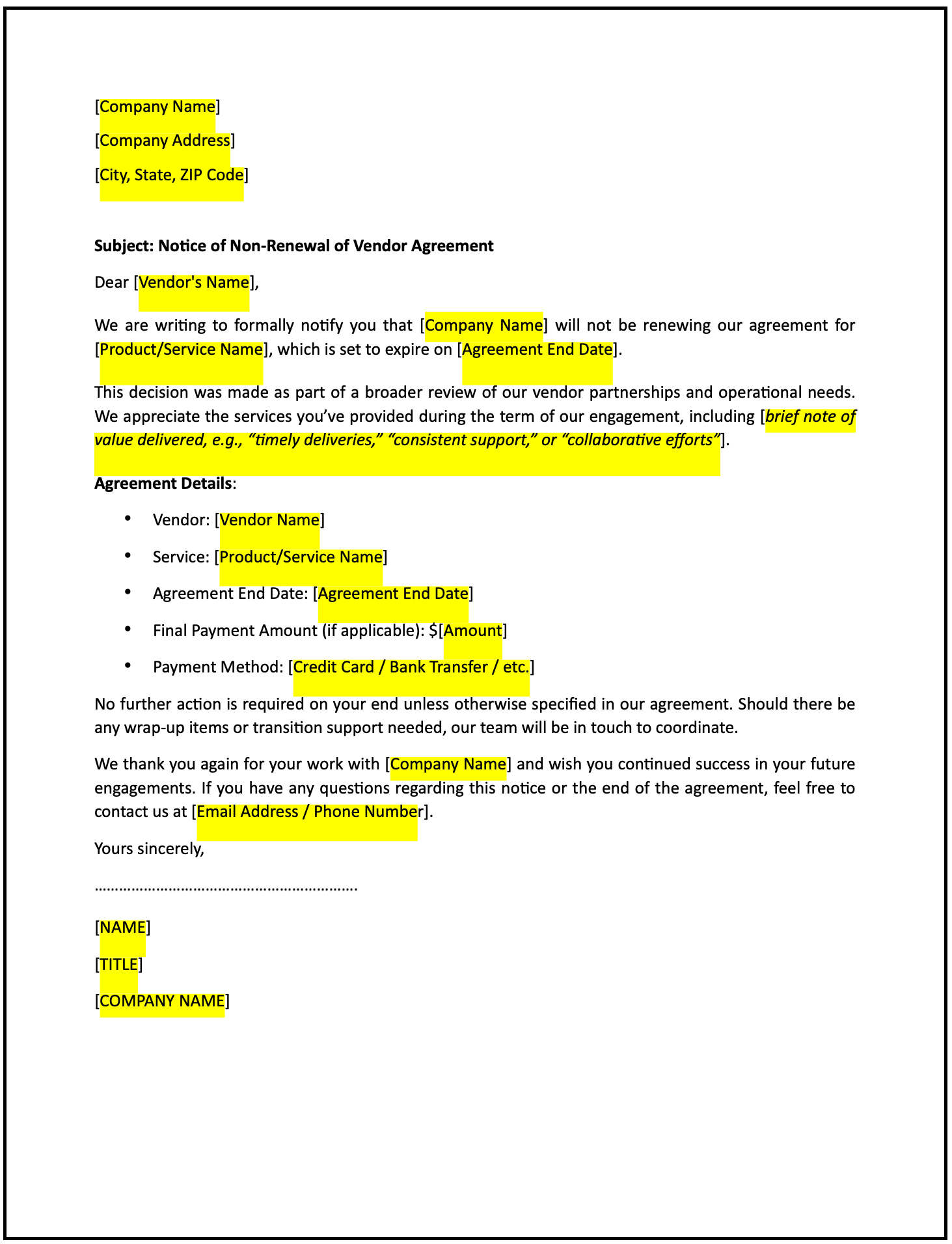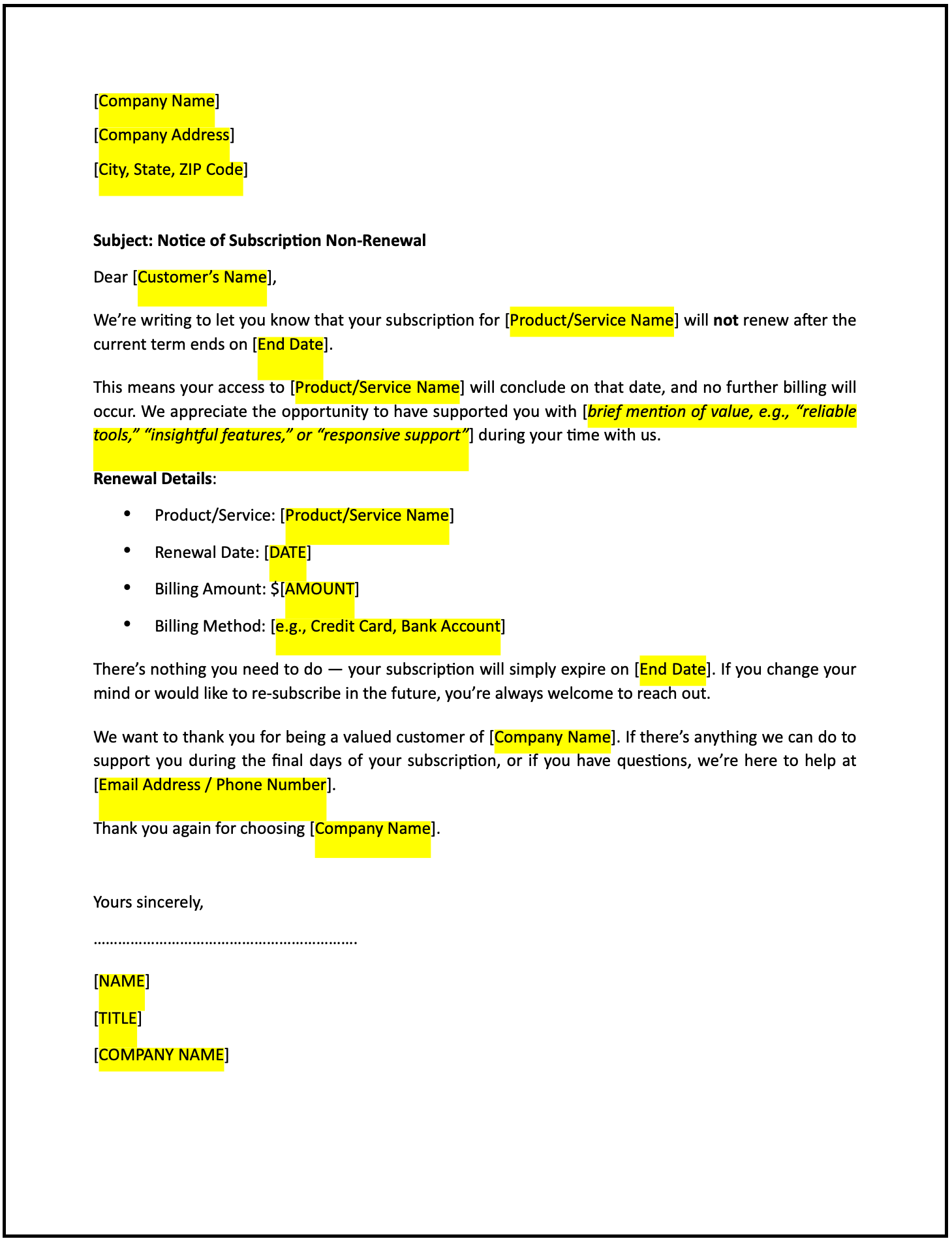Notification letter of account inactivity with reactivation options: Free template

Notification letter of account inactivity with reactivation options
Notifying customers of account inactivity and providing reactivation options is a proactive way to maintain relationships and encourage engagement. This letter provides a professional and friendly way to inform the customer, highlight the benefits of reactivating, and simplify the process.
How to use this notification letter of account inactivity with reactivation options
- Begin with acknowledgment: Start by referencing the customer’s account and thanking them for their past engagement.
- Notify of inactivity: Clearly state that their account has been inactive for a specified period, and explain the importance of keeping their account active.
- Highlight reactivation benefits: Emphasize the advantages of reactivating their account, such as access to exclusive features, discounts, or other perks.
- Provide reactivation options: Outline the steps for reactivating their account, such as logging in, updating details, or contacting support.
- Maintain a professional tone: Ensure the letter is respectful, positive, and customer-focused.
- Encourage action: Include a call-to-action that invites the customer to reactivate and provide a timeframe for doing so.
Benefits of using a notification letter of account inactivity with reactivation options
This letter template provides a structured and professional way to inform customers of inactivity while fostering goodwill and encouraging reengagement. Here’s how it helps:
- Proactively re-engages customers: Notifying customers reminds them of your service and encourages renewed interaction.
- Highlights value: Emphasizing the benefits of reactivation reinforces the relevance of your product or service.
- Simplifies reactivation: Clear instructions make it easy for customers to reactivate their accounts.
- Demonstrates professionalism: A well-crafted notification reflects your commitment to customer care.
- Strengthens relationships: Showing attentiveness to inactive accounts fosters loyalty and trust.
Tips for writing an effective notification letter of account inactivity with reactivation options
- Be specific: Clearly reference the customer’s account and the duration of inactivity to personalize the letter.
- Focus on benefits: Highlight the value of reactivating their account, such as access to services or exclusive offers.
- Use professional language: Maintain a respectful and friendly tone to encourage action.
- Provide clear instructions: Ensure the reactivation process is straightforward and easy to follow.
- Add urgency: Including a timeframe for reactivation can create a sense of importance and prompt action.
Frequently asked questions (FAQs)
Q: What details should I include in this letter?
A: Include acknowledgment of their account, the duration of inactivity, the benefits of reactivating, and clear instructions for doing so.
Q: Should I offer incentives for reactivation?
A: While not required, offering an incentive like a discount or free trial can increase reactivation rates.
Q: Who typically receives this letter?
A: Send the letter to customers whose accounts have been inactive for a defined period.
Q: How formal should this letter be?
A: The tone should be professional yet friendly and inviting to encourage a positive response.
Q: When should this letter be sent?
A: Send the letter after identifying inactive accounts but before deactivation or permanent closure, if applicable.
Q: Can this letter include a warning of account closure?
A: Yes, if necessary, include a polite note about potential account deactivation to encourage action.
Q: Is acknowledgment from the customer required?
A: While not required, providing contact information for questions or assistance shows attentiveness.
This article contains general legal information and does not contain legal advice. Cobrief is not a law firm or a substitute for an attorney or law firm. The law is complex and changes often. For legal advice, please ask a lawyer.


